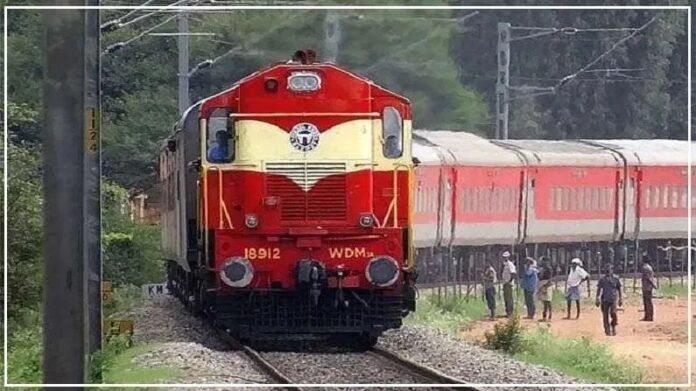Passengers Please Note… Train number 12952 Mumbai Tejas Rajdhani Express which runs from Delhi to Mumbai. She will arrive at the station shortly today. This train will leave New Delhi at 16:55 hrs which will reach Mumbai at 08:35 hrs the next day. This train will travel between the political capital of the country and the economic capital. It will complete the journey by stopping at various intermediate stations. Just like Indian Railways, after completing the up and down journey since independence, it has been able to reach the Amrit Mahotsav of this independence. This train takes 16 hours and 5 minutes to reach its destination, but in less than 5 minutes we are going to tell you about the journey of railways from independence to the present. Let’s get started.
Indian Railways is an example for the world
After independence, Indian Railways has moved step by step with the development of the country. The railway network has grown rapidly towards modernity and today is over 1.26 lakh kilometres long. The distance from the Moon to the Earth is 3.84 lakh kilometres and the daily journey of Indian trains is 36.78 lakh kilometres. This is 9.5 times the distance between the Earth and the Moon and 96 times the circumference of the Earth. Consider it like this: Indian Railways travels from the Earth to the Moon nine times a day or goes around the Earth 97 times. Isn’t it so that Indian Railways is considered an example for the world.
Rapid development of railways.
In the coming years, the Railways will launch Vande Bharat Express trains on many routes. Difficult areas like Kashmir, North East and Ladakh are also being connected through the railway network. The Railways is also building a dedicated freight corridor for the rapid economic development of the country. Sudhanshu Mani, former Managing Director of ISF, who played a major role in developing the Vande Bharat train of Indian Railways, has seen this journey from close quarters. He said in a conversation with the media that Indian Railways has always been the pride of the country and is a major lifeline for a country with a large population like India.
This journey from steam engine to Vande Bharat train is not only unique but is expected to be even more spectacular in the next five years. The government has clearly understood that Indian Railways can play a major role in the country’s economy. The decisions taken regarding railways in the last one year are unprecedented and with them, Indian Railways will be equipped with trains with world-class facilities and state-of-the-art technology in the coming years.
India has its eyes set on Bullet
Railway Minister Ashwini Vaishnav recently reviewed the Bullet Train project and expressed the possibility of the first Bullet Train being operational by 2026. This bullet train will run between Mumbai and Ahmedabad, where the train is planned to run at a speed of 320 kilometres per hour under the High Speed Rail (HSR) corridor. The total distance of this route will be 508 kilometres and will have 12 stations. Currently, it takes around six hours to travel between Mumbai and Ahmedabad, but this time will be reduced to half after the introduction of the bullet train.
The arch bridge is a great achievement.
The arch bridge being constructed over the Chenab River under the USBRL project is a major achievement, the work on which is expected to be completed soon. Apart from this, the Anji Bridge is also a unique example of engineering. Under this project, Northern Railway is extending the railway network up to Kashmir, so that in the coming years, the countrymen will be able to reach Kashmir directly by train. Northern Railway is also working on laying new railway lines in Uttarakhand, for example, it has started operating trains from Rishikesh to Karnaprayag and at Rishikesh railway station. A plan is also being drawn up to run a train up to Ladakh.
Will the armor work?
Apart from this, Northern Railway is trying to increase the speed of trains on the 2,045-kilometre main line and the 1,097-kilometre circular line. Many measures are being taken to increase the speed of trains between Delhi and Howrah and Delhi and Mumbai to 160 kilometres per hour. Keeping safety in mind, modern technology, called ‘Kavach’, is being used to prevent train collisions on about 118 kilometres of railway tracks in the Delhi region and about 1,175 kilometres in other divisions. This will be successful in preventing accidents.

